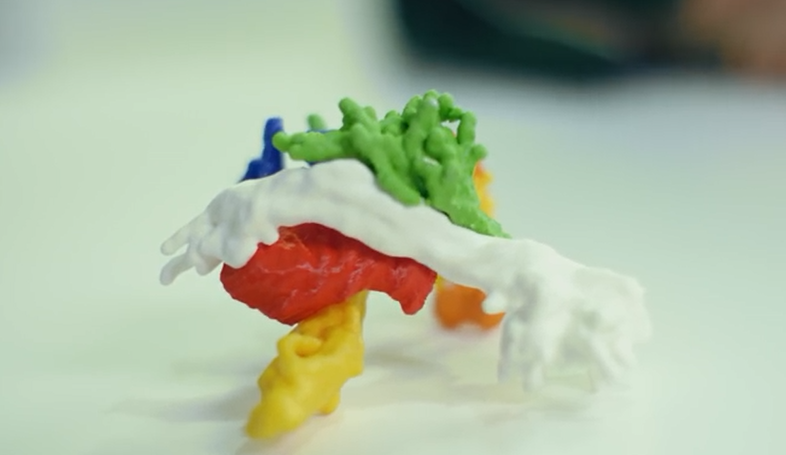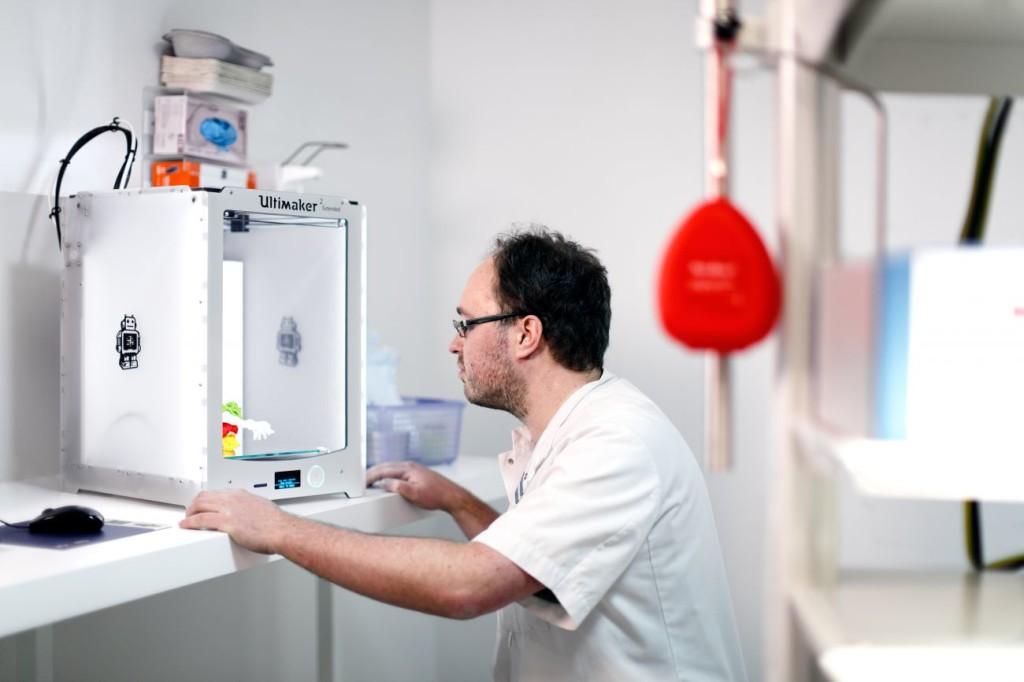The brain is perhaps the most complicated bodily organ to conduct surgery on, because of both how dense the tissue is and how uniquely formed each individual’s brain is. Also, if something goes wrong during brain surgery, it can affect so many other physical functions. You may have heard the common phrase “It isn’t brain surgery,” if you’re worried about something you shouldn’t be; it’s brain surgery you should worry about. For that reason, this is exactly the medical area that can utilize new technological support from 3D printing — as it becomes easier to make 3D models out of 2D medical scans like MRIs or CT scans.
3D printed medical models help both doctors and patients prepare for complex surgeries by providing exact replicas of patients’ body parts. With a consideration for the patients’ comfort-levels central, the Netherlands’ Radboud University Medical Center has been working on an alternative to the usual MRI or CT scans used to diagnose and treat brain tumors. These models make it easier for doctors to explain serious medical conditions to patients. Radiological (x-ray) images are difficult to work off of, and even more difficult to use to explain a procedure to a patient. That is where medical models come in: derived from the MRI scans, medical models can help make a condition and procedure literally more tangible for patients.
David Grim is the project leader at Radboud Hospital’s REshape & Innovation Center, and he leads the effort to take CT scans and MRIs and turn them into 3D models. Grim recommends the Ultimaker 2 Extended 3D printer for his brain tumor models, because he believes that it is user-friendly and inexpensive to use. Any doctor can learn to use these 3D printers– after all, it isn’t brain surgery! As explains in the video seen below, most of the Center’s 3D prints are oncological, and focused on cancerous brain tumors.
From looking at the models, you can already see how useful they can be. They are scaled to size of the portion of the brain being operated on, and different parts are presented in different colors, making it much easier to explain where a part is or where exactly the problem lies.
All of this makes great sense, and is going in the direction of favoring 3D printed medical models in complex procedures. Doctors also benefit from these models, as they allow them to become familiar with the size, shape, scale and part of the brain to be operated on. It looks as if something positive, such as enhanced doctor and patient communication, can come out of a difficult situation after all. Let’s hear your thoughts for this 3D Printing application in the 3D Printed Brian Tumors forum on 3DPB.com.
Subscribe to Our Email Newsletter
Stay up-to-date on all the latest news from the 3D printing industry and receive information and offers from third party vendors.
You May Also Like
Further Understanding of 3D Printing Design at ADDITIV Design World
ADDITIV is back once again! This time, the virtual platform for additive manufacturing will be holding the first-ever edition of ADDITIV Design World on May 23rd from 9:00 AM –...
3D Printer Maker EVO-tech Reborn as NEVO3D — Once More With Feeling
EVO-tech was a 3D printing service and original equipment manufacturer established in 2013 and based in Schörfling am Attersee, Austria. The company produced high-quality material extrusion systems featuring linear bearings,...
3D Systems Brings 3D Printed PEEK Cranial Implant to the U.S. with FDA Clearance
For more than 10 years, 3D Systems (NYSE:DDD) has worked hand-in-hand with surgeons to plan over 150,000 patient-specific cases, and develop more than two million instruments and implants from its...
CDFAM Returns to Berlin for Second Annual Symposium
The second CDFAM Computational Design Symposium is scheduled for May 7-8, 2024, in Berlin, and will convene leading experts in computational design across all scales. Building upon the first event...

































